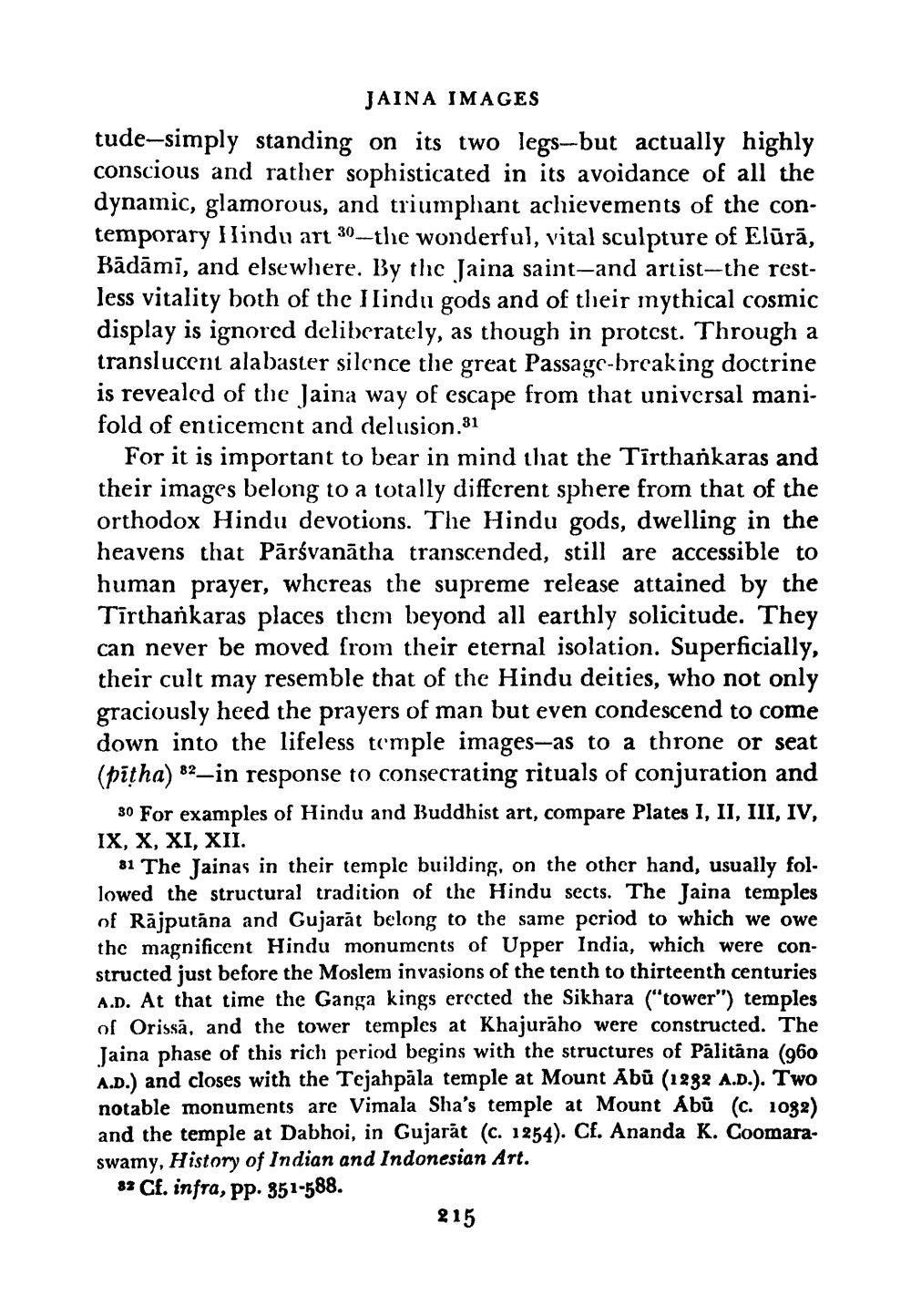________________
JAINA IMAGES tude-simply standing on its two legs--but actually highly conscious and rather sophisticated in its avoidance of all the dynamic, glamorous, and triumphant achievements of the contemporary Ilindu art 30--the wonderful, vital sculpture of Elūrā, Bādāmī, and elsewhere. By the Jaina saint-and artist-the restless vitality both of the Ilindu gods and of their mythical cosmic display is ignored deliberately, as though in protest. Through a translucent alabaster silence the great Passage-breaking doctrine is revealed of the Jaina way of escape from that universal manifold of enticement and delusion.31
For it is important to bear in mind that the Tirthankaras and their images belong to a totally different sphere from that of the orthodox Hindu devotions. The Hindu gods, dwelling in the heavens that Pārsvanātha transcended, still are accessible to human prayer, whereas the supreme release attained by the Tīrthankaras places them beyond all earthly solicitude. They can never be moved from their eternal isolation. Superficially, their cult may resemble that of the Hindu deities, who not only graciously heed the prayers of man but even condescend to come down into the lifeless temple images-as to a throne or seat (pīķha) 82–in response to consecrating rituals of conjuration and
30 For examples of Hindu and Buddhist art, compare Plates I, II, III, IV, IX, X, XI, XII.
81 The Jainas in their templc building, on the other hand, usually followed the structural tradition of the Hindu sects. The Jaina temples of Rājputāna and Gujarāt belong to the same period to which we owe the magnificent Hindu monuments of Upper India, which were constructed just before the Moslem invasions of the tenth to thirteenth centuries A.D. At that time the Ganga kings erected the Sikhara ("tower") temples of Orissă, and the tower temples at Khajuraho were constructed. The Jaina phase of this rich period begins with the structures of Palitana (960 A.D.) and closes with the Tejahpåla temple at Mount Abũ (1282 A.D.). Two notable monuments are Vimala Sha's temple at Mount Abũ (c. 1082) and the temple at Dabhoi, in Gujarat (c. 1254). Cf. Ananda K. Coomaraswamy, History of Indian and Indonesian Art. 82 Cf. infra, PP. 351-588.
215




